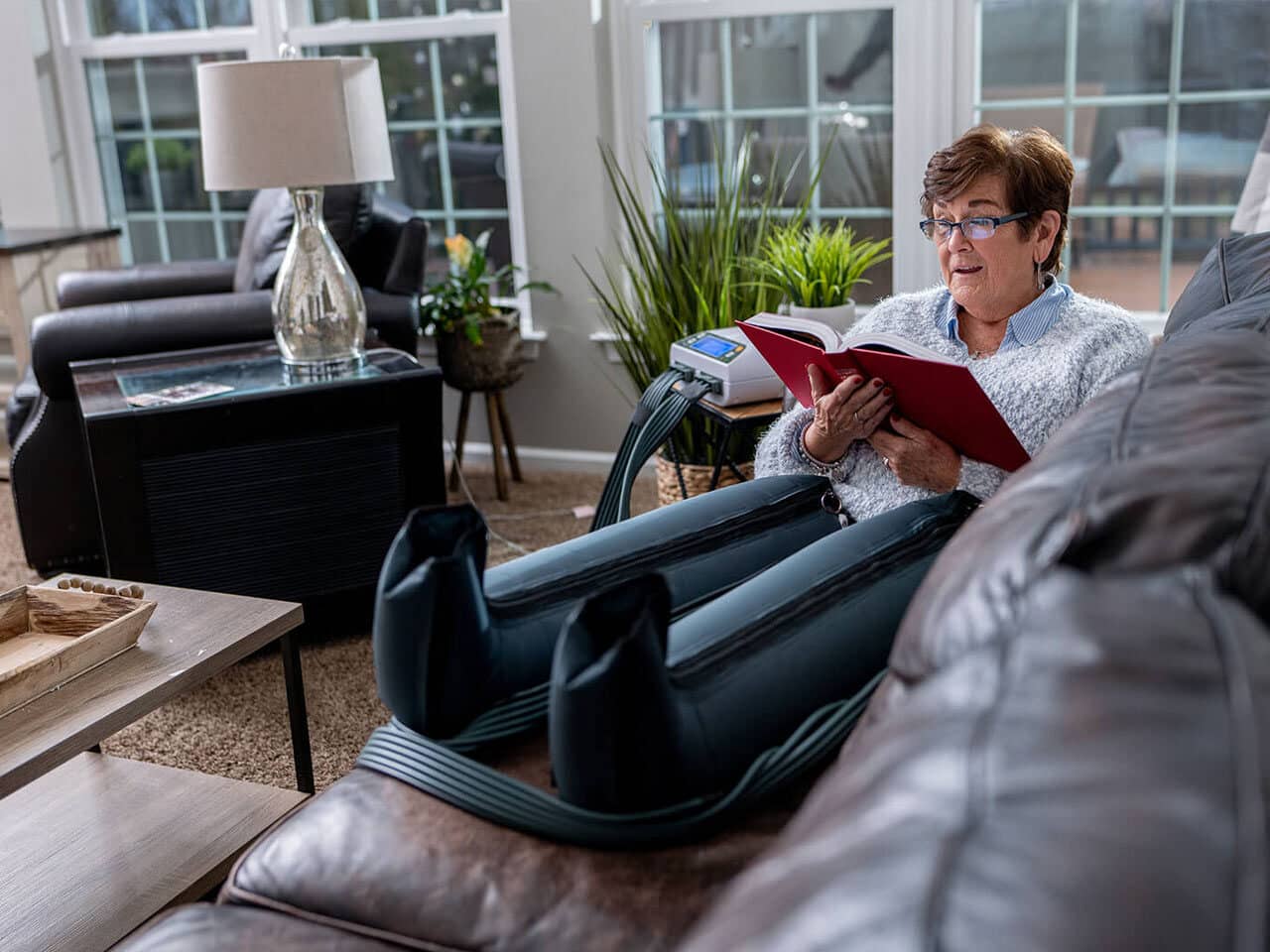Swelling in the legs or arms may be diagnosed as lymphedema, causing fluid to back up and build up in an area. Swelling and edema are commonly treated with compression garments, manual lymphatic drainage, pneumatic pumps, and exercises. These conservative treatments help move fluid out of the area and help avoid swelling from building back up. How does this happen? Where does this fluid go?
It’s essential to understand how the lymphatic system works to see how beneficial these treatments can be in reducing and managing lymphedema.
Anatomy of the Lymphatic System
The lymphatic system has three prominent roles in the body, which are:
- Keeping fluids and proteins balanced by removing excess fluid around the body’s tissues
- Producing immune cells and aiding in the process of fighting off infections or illnesses
- Absorbing fats from food and assist with digestion
Functions of the Lymphatic System
The lymphatic system is a complex network of vessels and organs that carry lymph fluid throughout the body. It’s a one-way system that directs fluid through a series of capillaries, vessels, lymph nodes, and ducts before returning to the heart.
Lymph fluid flows through this system and is made up of protein-rich fluid from the blood. The arteries in the body carry blood from the heart throughout the body. Most of this blood returns to the heart via the veins. However, about 10% of this is lymph fluid and returns to the heart via the lymphatic system.
Lymph fluid enters the lymphatic system via capillaries throughout the body and then moves into lymphatic vessels. Lymphatic vessels have small valves inside that guide fluid through them. The fluid follows through the vessels until it reaches the lymph nodes. The lymph fluid is filtered and cleaned at the lymph nodes for any foreign bodies like illness, bacteria, or infections. After the lymph nodes, the fluid moves through another series of vessels and lymphatic ducts and then returns to the heart and into the circulatory system.
An increase in the amount of fluid in an area of the body creates a higher level of pressure outside the lymph vessels. The fluid then moves through lymph capillaries and into the lymphatic vessels, removing it from the area and keeping the fluid levels balanced.
When the lymphatic system is healthy, it can keep up with this high demand and avoid swelling. However, if there is a dysfunction of the lymphatic system or someone has lymphedema, the system has a hard time getting rid of this excess fluid, and swelling occurs.
How does the lymphatic system respond and work when lymphedema treatment is done?
Manual Lymphatic Drainage
Manual Lymphatic Drainage (MLD) is a technique that uses a gentle skin stretch in a specific direction and sequence. This technique moves lymphatic fluid out of a congested area or limb. MLD stimulates lymph nodes and increases the activity of the lymphatic vessels to decongest and speed up the fluid flow. The direction follows the same path the lymph fluid flows through lymphatic vessels and will guide fluid to the lymph nodes.
MLD is done by a professional or taught to individuals to complete themselves at home. It can be done daily as an adjunct to other treatment interventions for lymphedema management.
Pneumatic Compression Devices
Pneumatic compression devices or pumps, such as the AIROS 8, are devices that inflate and deflate with air in a sequence similar to lymphatic drainage. They pump and stimulate the lymphatic vessels to move fluid out of the congested limb by using a gradient pressure to encourage fluid movement out of the arm or leg.
Pneumatic compression pumps are often used daily for ongoing lymphedema treatment and management. They are a great way to keep the lymph fluid moving and avoid pooling and sitting in an area, which can lead to complications such as hardening of tissues and skin and increased risk for infections.
Exercise
Unlike your arteries, which have the heart to keep blood flowing and moving, the lymphatic vessels don’t have a natural pump. Due to this, your lymphatic vessels rely on the surrounding muscles to help pump fluid along.
Additionally, did you know that sitting for long periods without moving can be tough on the lymphatic system? Someone can help stimulate and pump lymph fluid out of an area by getting up and simply moving. Many forms of exercise are wonderful for lymphedema, including walking, swimming, and resistance training. Hobbies that involve moving the body, like gardening or hiking, are also beneficial. In the end, finding an activity that allows someone to be consistent with movement is the best way to stay active for a healthy lymphatic system.
Compression Garments
Compression stockings or garments are most commonly used for lymphedema treatment. They can often be mistaken for the first way to treat lymphedema. Garments are meant to be maintenance garments for lymphedema and a way to manage lymphedema long term. Their role is to keep pressure on the limb to prevent swelling.
In the lymphatic system, this can help make the fluid moving from surrounding tissues in the body into the vessels more efficiently and effectively. This is due in large part to the fact that there is no longer any space or room for the fluid to linger. The various levels and types of compression garments will vary based on the severity of the lymphedema. A Certified Lymphedema Therapist (CLT) can help individuals find optimal treatment and personalized guidance.
Are you looking for a CLT in your area? Search the directory at www.clt-lana.org
Need a compression pump for yourself or a patient? Email AIROS at info@airosmedical.com.

